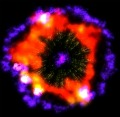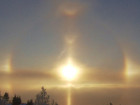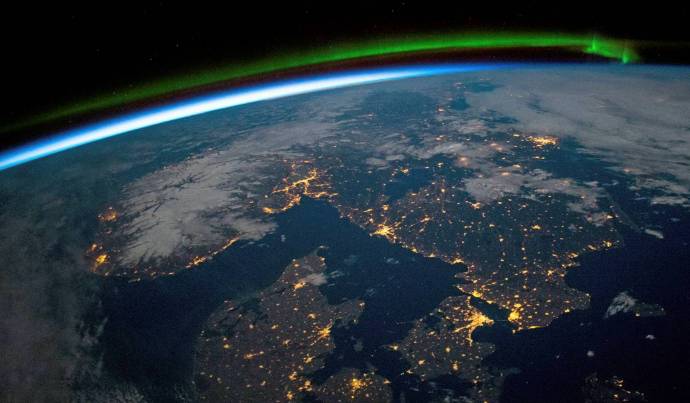|
Space Stuff Collection
|
|
| Dodecahedron | Date: Monday, 23.02.2015, 03:18 | Message # 301 |
 Astronaut
Group: Users
 United States
United States
Messages: 58
Status: Offline
| I recently found this again.
Amazing read
Time without end: Physics and biology in an open universe
" What compromises in precision should scientists make in the name of tradition, sentiment, and good public relations?"
None
|
| |
| |
| Aerospacefag | Date: Monday, 23.02.2015, 14:16 | Message # 302 |
 Pioneer
Group: Users
 Russian Federation
Russian Federation
Messages: 401
Status: Offline
| Somebody posted this in SE goup in VK social net, so I think I will repost it there.
Edited by Aerospacefag - Monday, 23.02.2015, 14:20 |
| |
| |
| midtskogen | Date: Wednesday, 25.03.2015, 20:10 | Message # 303 |
 Star Engineer
Group: Users
 Norway
Norway
Messages: 1674
Status: Offline
| I found Fred Espenak's introduction to total solar eclipses well written and worth a read:
Quote The Experience of Totality
"Some people see a partial eclipse and wonder why others talk so much about a total
eclipse. Seeing a partial eclipse and saying that you have seen an eclipse is like
standing outside an opera house and saying that you have seen the opera; in both
cases, you have missed the main event."
-Jay M. Pasachoff (1983)
First contact. A tiny nick appears on the westem side of the Sun: The eye detects no difference
in the amount of sunlight. Nothing but that nick portends anything out of the ordinary. But as
the nick becomes a gouge in the face of the Sun, a sense of anticipation begins. This will be no
ordinary day.
Still, things proceed leisurely for the first half hour or so, until the Sun is more than half
covered. Now, gradually at first, then faster and faster, extraordinary things begin to happen.
The sky is still bright, but the blue is a little duller. On the ground around you the light is
beginning to dim. Over the next 10 to 15 minutes, the landscape takes on a steely gray metallic
cast.
As the minutes pass, the pace quickens. With about a quarter hour left until totality, the
westem sky is now darker than the east, regardless of where the Sun is in the sky. The shadow of
the Moon is approaching. Even if you have never seen a total eclipse of the Sun before, you
know that something amazing is going to happen, is happening now -- and that it is beyond
normal human experience.
Less than fifteen minutes until totality. The Sun, a narrowing descent, is still fiercely bright,
but the blueness of the sky has deepened into blue-gray or violet. The darkness of the sky begins
to close in around the Sun. The Sun does not fill the heavens with brightness anymore.
Five minutes to totality. The darkness in the west is very noticeable and gathering strength,
a dark amorphous form rising upward and spreading out along the western horizon. It builds
like a massive storm, but in utter silence, with no rumble of distant thunder. And now the
darkness begins to float up above the horizon, revealing a yellow or orange twilight beneath. You
are already seeing through the Moon's narrow shadow to the resurgent sunlight beyond.
The acceleration of events intensifies. The crescent Sun is now a blazing white sliver, like a
welders torch. The darkening sky continues to close in around the Sun, faster, engulfing it.
Minutes have become seconds. A ghostly round silhouette looms into view. It is the dark
limb of the Moon, fiamed by a white opalescent glow that creates a halo around the darkened
Sun. The corona, the most striking and unexpected of all the features of a total eclipse, is
emerging. At one edge of the Moon the brilliant solar descent remains. Together they appear as
a celestial diamond ring.
Suddenly, the ends of the bare sliver of the Sun break into individual points of intense white
light -- Baily’s beads -- the last rays of sunlight passing through the deepest lunar valleys. The
beads flicker, each lasting but an instant and vanishing as new ones form. And now there is just
one left. It glows for a moment, then fades as if it were sucked into an abyss.
Totality.
Where the Sun once stood, there is a black disk in the sky, outlined by the soft pearly white
glow of the corona, about the brightness of a full moon. Small but vibrant reddish features stand
at the eastern rim of the Moon's disk, contrasting vividly with the white of the corona and the
black where the Sun is hidden. These are the prominences, giant clouds of hot gas in the Sun's
lower atmosphere. They are always a surprise, each unique in shape and size, different yesterday
and tomorrow fiom what they are at this special moment.
You are standing in the shadow of the Moon.
It is dark enough to see Venus and Mercury and whichever of the brightest planets and stars
happen to be close to the Sun's position and above the horizon. But it is not the dark of night.
looking across the landscape at the horizon in all directions, you see beyond the shadow to
where the eclipse is not total, an eerie twilight of orange and yellow. This light from beyond the
darkness that envelops you warns that time is limited.
Now, at the midpoint in totality, the corona stands out most clearly, its shape and extent
never quite the same rom one eclipse to another. And only the eye can do the corona justice, its
special pattern of faint wisps and spikes on this day never seen before and never to be seen
again.
Yet around you at the horizon is a warning that totality is drawing to an end. The west is
brightening while in the east the darkness is deepening and descending toward the horizon.
Above you, prominences appear at the westem edge of the Moon. The edge brightens.
Suddenly totality is over. A point of sunlight appears. Quickly it is joined by several more
jewels, which merge into a sliver of the descent Sun once more. The dark shadow of the Moon
silently slips past you and rushes off toward the east.
It is then you ask, “When is the next one?”
NIL DIFFICILE VOLENTI

Edited by midtskogen - Wednesday, 25.03.2015, 20:10 |
| |
| |
| midtskogen | Date: Friday, 19.06.2015, 20:11 | Message # 304 |
 Star Engineer
Group: Users
 Norway
Norway
Messages: 1674
Status: Offline
| I can see my house from here...

Added (19.06.2015, 20:11)
---------------------------------------------
Wow! Watch fullscreen.
NIL DIFFICILE VOLENTI

Edited by midtskogen - Friday, 19.06.2015, 20:11 |
| |
| |
| n0b0dy | Date: Thursday, 09.07.2015, 07:15 | Message # 305 |
 Explorer
Group: Users
 Pirate
Pirate
Messages: 297
Status: Offline
| Has anybody checked if this system is in SE? I am not in my SE PC at the moment  . .
|
| |
| |
| midtskogen | Date: Thursday, 15.10.2015, 19:50 | Message # 306 |
 Star Engineer
Group: Users
 Norway
Norway
Messages: 1674
Status: Offline
| The Most Mysterious Star in Our Galaxy
I'm not sure what to think of this, except that the article is speculative and poorly written. Certainly, nobody there is looking back watching the sun dim every 365 days, since the Earth isn't eclipsing the sun from that viewpoint.
NIL DIFFICILE VOLENTI

|
| |
| |
| DoctorOfSpace | Date: Thursday, 15.10.2015, 20:01 | Message # 307 |
 Galaxy Architect
Group: Global Moderators
 Pirate
Pirate
Messages: 3600
Status: Offline
| I really hope it is the forming of a Dyson ring/sphere but sadly that seems incredibly unlikely. 
Intel Core i7-5820K 4.2GHz 6-Core Processor
G.Skill Ripjaws V Series 32GB (4 x 8GB) DDR4-2400 Memory
EVGA GTX 980 Ti SC 6GB
|
| |
| |
| Watsisname | Date: Friday, 16.10.2015, 07:25 | Message # 308 |
 Galaxy Architect
Group: Global Moderators
 United States
United States
Messages: 2613
Status: Offline
| Clouds of cool, optically thick dust.
Or an alien superstructure caught during its construction!
One has profoundly less a priori probability, but would be profoundly more exciting.

|
| |
| |
| midtskogen | Date: Friday, 16.10.2015, 08:31 | Message # 309 |
 Star Engineer
Group: Users
 Norway
Norway
Messages: 1674
Status: Offline
| If they wanted to construct a Dyson sphere, they likely ran out of planets/building material, which would also explain why the structure has so many holes...
Seriously, I think we need to find more variable stars like this, and then we can begin to speculate by looking at what these stars have and haven't in common.
NIL DIFFICILE VOLENTI

|
| |
| |
| DoctorOfSpace | Date: Friday, 16.10.2015, 12:15 | Message # 310 |
 Galaxy Architect
Group: Global Moderators
 Pirate
Pirate
Messages: 3600
Status: Offline
| Quote midtskogen (  ) If they wanted to construct a Dyson sphere, they likely ran out of planets/building material, which would also explain why the structure has so many holes...
They also chose a poor location to begin with, if they went with a very low mass Red Dwarf they could sustain their civilization for 10+ trillion years.
Intel Core i7-5820K 4.2GHz 6-Core Processor
G.Skill Ripjaws V Series 32GB (4 x 8GB) DDR4-2400 Memory
EVGA GTX 980 Ti SC 6GB
|
| |
| |
| JackDole | Date: Friday, 16.10.2015, 12:48 | Message # 311 |
 Star Engineer
Group: Local Moderators
 Germany
Germany
Messages: 1742
Status: Offline
| How about a planet that was just recently destroyed by the Death Star? Of course, it is an environmentally friendly Death Star, which leaves no residual radiation in the destruction of the planet.
KIC 8462852:
Code
// KIC 8462852 basic
Star "KIC 8462852/TYC 3162-665-1/2MASS J20061546+4427248"
{
RA 20 06 15.457
Dec 44 27 24.61
Dist 454
Class "F3 IV" // V / IV
AppMagn 11.705
Orbit
{
Type "Static"
RefPlane "Ecliptic"
}
}
Don't forget to look here.

|
| |
| |
| Watsisname | Date: Friday, 16.10.2015, 19:45 | Message # 312 |
 Galaxy Architect
Group: Global Moderators
 United States
United States
Messages: 2613
Status: Offline
| Quote JackDole (  ) How about a planet that was just recently destroyed by the Death Star? Of course, it is an environmentally friendly Death Star, which leaves no residual radiation in the destruction of the planet.
Thermodynamically impossible. Destroying a planet (by converting it into clouds of dust and debris) involves introducing a huge amount of energy to overcome the planet's own gravitational binding energy. Energy will be converted into heat by this process, then radiated away as light (mostly infrared). But we don't see an infrared excess.
Quote midtskogen (  ) If they wanted to construct a Dyson sphere, they likely ran out of planets/building material, which would also explain why the structure has so many holes...
Plausible, but very difficult to imagine how a civilization intelligent enough to begin constructing a Dyson sphere would make such a severe error on the material requirements and census of their system.

|
| |
| |
| JackDole | Date: Friday, 16.10.2015, 21:16 | Message # 313 |
 Star Engineer
Group: Local Moderators
 Germany
Germany
Messages: 1742
Status: Offline
| Quote Watsisname (  ) Thermodynamically impossible
I'm not scientifically educated enough for a real debate on this issue. But I think I have read somewhere that there is actually no real physical reason that the arrow of entropy goes only in one direction. Maybe I misread. But what do we know what a level 3 civilization has for ways of recovering energy from infrared radiation. 
Don't forget to look here.

|
| |
| |
| midtskogen | Date: Sunday, 13.12.2015, 08:45 | Message # 314 |
 Star Engineer
Group: Users
 Norway
Norway
Messages: 1674
Status: Offline
| Supernova successfully predicted. Although an old supernova, this is pretty cool.
NIL DIFFICILE VOLENTI

|
| |
| |
| Watsisname | Date: Sunday, 13.12.2015, 09:55 | Message # 315 |
 Galaxy Architect
Group: Global Moderators
 United States
United States
Messages: 2613
Status: Offline
| Not so much a test of predicting supernovae, but of general relativity and models of gravitational lensing. A very neat one, at that! 

|
| |
| |